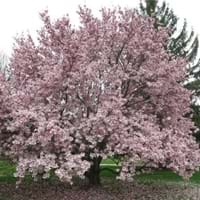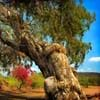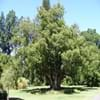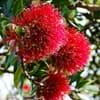Life Span
Perennial
Annual and Perennial
Origin
Europe, Hybrid origin
Hybrid origin
Types
Grace McDade, Jurmag1
Not Available
Number of Varieties
Not Available
Habitat
Not Available
gardens, Tropical areas
USDA Hardiness Zone
4-9
4-7
Sunset Zone
3b, 4, 5, 6, 7, 8, 9, 14, 15, 16, 17, 18, 19, 20, 21, 22, 23, 24
1a, 1b, 2a, 2b, 3a, 3b, 4, 5, 6, 7, 8, 9, 14, 15, 16, 17, 18, 19, 20, 21
Habit
Oval or Rounded
Spreading
Flower Color
Pink, Violet
Not Available
Flower Color Modifier
Bicolor
Bicolor
Fruit Color
Red
Not Available
Leaf Color in Spring
Light Green
Not Available
Leaf Color in Summer
Green
Not Available
Leaf Color in Fall
Yellow, Yellow green
Not Available
Leaf Color in Winter
Not Available
Not Available
Plant Season
Spring
Spring, Fall
Sunlight
Full Sun, Partial Sun
Full Sun, Partial Sun
Type of Soil
Clay, Loam, Sand
Clay, Loam, Sand
The pH of Soil
Acidic, Neutral
Acidic, Neutral, Alkaline
Soil Drainage
Well drained
Well drained
Tolerances
Not Available
Not Available
Where to Plant?
Ground
Ground
How to Plant?
Seedlings, Stem Cutting
Seedlings, Stem Cutting
Plant Maintenance
Medium
Medium
Watering Requirements
Requires regular watering
Requires plenty of water during the growing season, Use Mulches to help prevent water loss during hot and windy weather
In Summer
Lots of watering
Lots of watering
In Spring
Moderate
Moderate
In Winter
Average Water
Average Water
Soil pH
Acidic, Neutral
Acidic, Neutral, Alkaline
Soil Type
Clay, Loam, Sand
Clay, Loam, Sand
Soil Drainage Capacity
Well drained
Well drained
Sun Exposure
Full Sun, Partial Sun
Full Sun, Partial Sun
Pruning
Remove all suckers, Remove damaged leaves, Remove dead or diseased plant parts
Midseason Pruning, Pinching, Remove damaged leaves, Remove dead leaves, Remove deadheads, Shape and thin as needed
Fertilizers
Fertilize in late fall, Requires high amount of nitrogen
Occasional light liquid fertilizer
Pests and Diseases
Bacterial leaf spot, Canker, Leaf spot, Scale, Spot anthracnose, Thripes, Verticillium Wilt
Aphids, Mealybugs
Plant Tolerance
Not Available
Not Available
Flower Petal Number
Single
Not Available
Foliage Texture
Coarse
Not Available
Foliage Sheen
Matte
Not Available
Attracts
Birds
Not Available
Allergy
Asthma
no allergic reactions
Aesthetic Uses
Cottage Garden, Showy Purposes
Ornamental use, Showy Purposes
Beauty Benefits
Perfumes, Skin cleanser
Not Available
Environmental Uses
Air purification, Fixes Nitrogen, Shadow Tree
Air purification
Medicinal Uses
No Medicinal Use
No Medicinal Use
Part of Plant Used
Whole plant
Flowers
Other Uses
Used as Ornamental plant
Showy Purposes, Used as Ornamental plant
Used As Indoor Plant
No
No
Used As Outdoor Plant
Yes
Yes
Garden Design
Feature Plant, Shade Trees, Street Trees
Edible, Feature Plant, Fruit / Fruit Tree, Shade Trees, Topiary / Bonsai / Espalier
Botanical Name
Magnolia × soulangeana
MALUS 'Baskatong'
Common Name
saucer magnolia
Baskatong Crabapple, Crabapple, Flowering Crabapple
In Hindi
saucer magnolia
crabapple
In German
saucer magnolia
Flowering Crabapple
In French
saucer magnolia
Floraison Crabapple
In Spanish
saucer magnolia
floración Crabapple
In Greek
saucer magnolia
Άνθιση Crabapple
In Portuguese
saucer magnolia
Crabapple
In Polish
saucer magnolia
Kwitnienie Crabappleb
In Latin
saucer magnolia
crabapple
Phylum
Magnoliophyta
Tracheophyta
Class
Magnoliopsida
Magnoliopsida
Order
Not Available
Rosales
Family
Magnoliaceae
Rosaceae
Clade
Angiosperms
Angiosperms, Eudicots, Rosids
Tribe
Not Available
Maleae
Subfamily
Not Available
Amygdaloideae
Number of Species
Not Available
Importance of Saucer Magnolia and Flowering Crabapple
Want to have the most appropriate plant for your garden? You might want to know the importance of Saucer Magnolia and Flowering Crabapple. Basically, these two plants vary in many aspects. Compare Saucer Magnolia and Flowering Crabapple as they differ in many characteristics such as their life, care, benefits, facts, etc. Every gardener must at least have the slightest clue about the plants he wants to plant in his garden. Compare their benefits, which differ in many ways like facts and uses. The medicinal use of Saucer Magnolia is No Medicinal Use whereas of Flowering Crabapple is No Medicinal Use. Saucer Magnolia has beauty benefits as follows: Perfumes and Skin cleanser while Flowering Crabapple has beauty benefits as follows: Perfumes and Skin cleanser.
Compare Facts of Saucer Magnolia vs Flowering Crabapple
How to choose the best garden plant for your garden depending upon its facts? Here garden plant comparison will help you to solve this query. Compare the facts of Saucer Magnolia vs Flowering Crabapple and know which one to choose. As garden plants have benefits and other uses, allergy is also a major drawback of plants for some people. Allergic reactions of Saucer Magnolia are Asthma whereas of Flowering Crabapple have no allergic reactions respectively. Having a fruit bearing plant in your garden can be a plus point of your garden. Saucer Magnolia has no showy fruits and Flowering Crabapple has showy fruits. Also Saucer Magnolia is not flowering and Flowering Crabapple is not flowering . You can compare Saucer Magnolia and Flowering Crabapple facts and facts of other plants too.





